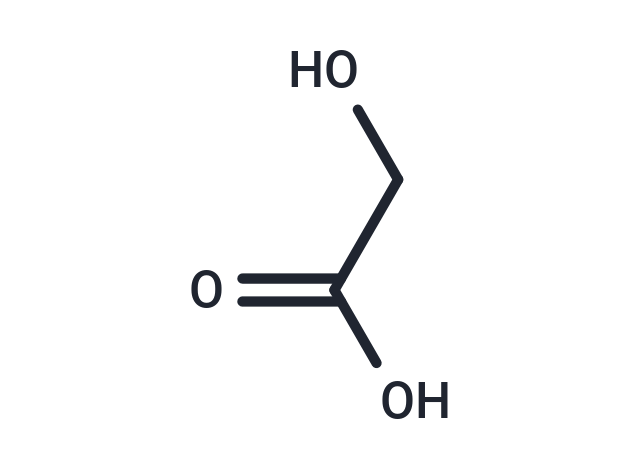Shopping Cart
- Remove All
 Your shopping cart is currently empty
Your shopping cart is currently empty

Glycolic acid, an inhibitor of tyrosinase, suppresses melanin formation and is used in skincare products.

| Pack Size | Price | Availability | Quantity |
|---|---|---|---|
| 500 mg | $41 | In Stock | |
| 1 g | $48 | In Stock | |
| 1 mL x 10 mM (in DMSO) | $45 | In Stock |
| Description | Glycolic acid, an inhibitor of tyrosinase, suppresses melanin formation and is used in skincare products. |
| In vivo | Glycolic acid(GA) reduced the production of UVB-induced nuclear factor kappa B (NF-κB)-dependent inflammatory mediators [interleukin (IL)-1β, IL-6, IL-8, cyclooxygenase (COX)-2, tumor necrosis factor-α, and monocyte chemoattractant protein (MCP-1)] at both mRNA and protein levels. GA inhibited the UVB-induced promoter activity of NF-κB in HaCaT cells. GA attenuated the elevation of senescence associated with β-galactosidase activity but did not affect the wound migration ability. The topical application of GA inhibited the genes expression of IL-1β, IL-6, IL-8, COX-2, and MCP-1 in UVB-exposed mouse skin. The mice to UVB irradiation after GA was topically applied for 9 consecutive days and reported that 1-1.5% of GA exerted anti-inflammatory effects on mouse skin[1] |
| Animal Research | The effects of different concentrations of Glycolic acid(GA) on the inflammatory response of human keratinocytes HaCaT cells and C57BL/6J mice dorsal skin.?After GA was topically applied, HaCaT and mice skin were exposed to UVB irradiation[1]. |
| Molecular Weight | 76.05 |
| Formula | C2H4O3 |
| Cas No. | 79-14-1 |
| Smiles | OCC(O)=O |
| Relative Density. | 1.26 g/cm3. Temperature:20 °C. |
| Storage | Powder: -20°C for 3 years | In solvent: -80°C for 1 year | Shipping with blue ice. | |||||||||||||||||||||||||||||||||||
| Solubility Information | DMSO: 50 mg/mL (657.46 mM), Sonication is recommended. | |||||||||||||||||||||||||||||||||||
Solution Preparation Table | ||||||||||||||||||||||||||||||||||||
DMSO
| ||||||||||||||||||||||||||||||||||||

Copyright © 2015-2025 TargetMol Chemicals Inc. All Rights Reserved.